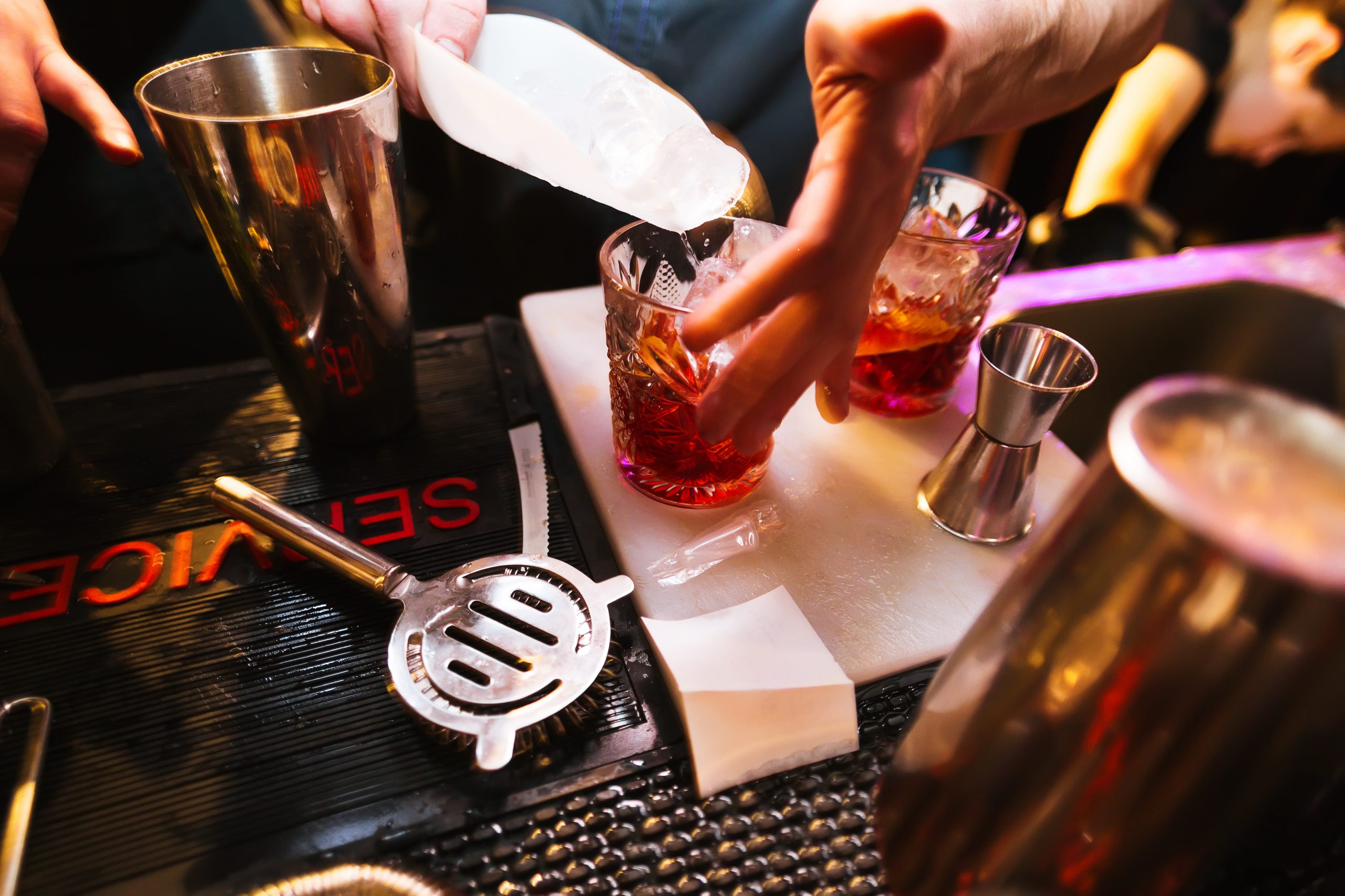


If you’ve worked in the industry, you probably know what it’s like to prepare for the dreaded “health inspection” day. You run around scrubbing all visible surfaces, telling everyone to wash their hands, and checking the temperature of every fridge.
Your bar must pass every health inspection. If not, you risk ruining your reputation, getting people sick, and getting closed down for good. Although this can be a bit stressful, it’s important bars and restaurants are regularly inspected to ensure staff and customers don’t fall victim to foodborne illness.
Start Your Free Trial With Bevspot Today!
You may not consider “food safety” a pressing concern if you’re a bartender mostly dealing with drinks, but food safety isn’t just owned by the kitchen it is a key component of bar managing. If you haven’t had the proper training, aren’t aware of safe practices, or don’t have a proper health inspection checklist, your bar might not just fail an inspection; you could potentially harm a customer.
In a busy bar scene, it might seem like the quickest way to get some rocks in a glass. But if you knew the potential consequences, you’d think twice before taking this short-cut.
Using a glass to scoop ice is harmful in two ways:
1) if the cups not washed properly, it could contaminate all of the clean ice
2) if the glass breaks or chips, it can get into your patron’s drink or fall into the ice bin.
To eliminate these two health risks, use a clean ice scoop to put ice in drink glasses. If there ever is a suspected problem with the ice, be proactive and throw hot water on the entire batch and replace it.
Never pick up glasses by the rim. By doing so, you’re spreading any bacteria that might be on your hands straight into your customer’s mouth. Make sure to hold the glass by the bottom or by wrapping your hand around the side. If you’re serving wine, be sure to hold the glass by the stem. Be wary of this, not only does this bad habit put your customers at risk, but many people keep an eye out for this when they go to bars and restaurants. You reputation is also important.
You should be washing your hands just as often as the chef. Think about the sticky cash tips you pick up and how many dirty glasses and you’re constantly touching. They’re probably covered with viruses, bacteria, and other unknown substances — yuck.
If you don’t wash your hands regularly, you could be spreading these germs to others and putting yourself in harm’s way. Make sure there’s antibacterial soap and a designated hand-washing station for bar staff. Each handwash should last for around 20 seconds and should occur before a shift, multiple times during a shift (especially if you touch their hair or face), and after a shift. Although bars are often crunched for time, hand-washing shouldn’t be overlooked if you want to keep your staff and patrons safe.
Just because something looks clean, doesn’t mean it is. Bar surfaces need to actually be clean in order to prevent illness and pass a health inspection. This means, you can’t just take a towel and smear contaminants around, you need to sanitize the bar to kill bacteria that could potentially harm a patron.
Remember, the bar is the center of your business. If your bar top isn’t disinfected, menus, silverware, napkins, and other items can potentially be contaminated, putting your customers at risk.
First of all, glasses really shouldn’t be stored on the bar. If the storing and the drinking area are the same, it leaves the potential for cross contamination. If you have the room for it, it’s better to store your glasses on racks or shelves. This will keep them separated and prevent customers and bar staff from knocking them into drinking/eating areas and the ice bin. Store your glasses upside down in order to prevent dust from collecting. If storing your glasses on the bar is your only resort, use storage mats to prevent glasses from getting chipped.
Serving customers a drink in a dirty glass is a major no-no. Not only does it look bad, but it can also ruin a good beer and potentially get them sick. Staff should be trained to wash glasses at a minimum of 171 degrees Fahrenheit and dish soap, or with chemical sanitizers in a low temperature dishwasher. Once glasses are washed, make sure to double check for remaining lipstick stains, they can be pretty resilient. It’s also important to make sure there is no remaining soap or food fat on the glass surface, especially when serving beer because it can ruin a beer’s head.
Beer lines don’t just clean themselves. You need to clean your beer line and faucet parts weekly, or every time you switch out a keg in order to flush out the old beer and make way for the new. If you don’t clean your draft lines, you’re potentially leaving mold, bacteria, yeast, and dead fruit flies in there. Not only is this gross and potentially harmful, it’s also detrimental to the the taste of your beer.
This is a bad habit many of us have, and we should all work on breaking it. But it’s even more important for bartenders to stop this bad habit in its tracks. By licking your fingers, you’re transferring germs from your mouth to your customer’s napkin. Plus, anything that your fingers have touched is going in your mouth — ew.
People love free food (especially when a few cocktails are involved). It’s okay to have these goodies for your customers, but it’s important to think about what snacks you choose, how they’re presented, and how they’re rotated out. First, choose snacks that can stay out at room temperature for long periods of time like pretzels and popcorn. Second, consider giving personal snacks to patrons when they take a seat at the bar instead of simply leaving out large bowls for everyone. An alternative would be to have a large bin and allow customers to scoop their own portion into plastic cups. And most importantly, whatever customers don’t finish should be discarded, NOT put back into the storage bin.
Nowadays, garnishes are a lot more elaborate than just a lemon or a lime wedge. Unconventional food items like shrimp, melon, and salami have been making their way on cocktails across the country. And while you can leave the common garnishes at the bar for the majority of the day, there are some that need to be stored in a refrigerator up until use to eliminate the chance of foodborne illness. You also need to check the temperature of your fridges regularly to ensure they are holding food at between 32 and 40 degrees.
First thing’s first, wash your cutting boards! Also, make sure you’re using separate ones for different types of garnishes. For example, prepare shrimp and limes separately. Not only is this good for preventing foodborne illness, but also allergic reactions. If someone’s allergic to shrimp and a lime has been cross-contaminated by it, you risk a serious reaction if you add it to their cocktail.
Rinsing garnishes before cutting them is crucial for getting rid of all the bacteria. Even if you’re dealing with lemons and limes, your knife can pick up bacteria and spread it inside while you’re cutting. When you’re rinsing your garnishes, be sure to use a kitchen sink that isn’t filled with dirty glasses.
Garnish holders are often placed directly on the bar, within the reach of customers. Once people start getting to their third or fourth cocktail, they might decide they fancy a cherry and reach into the garnish holder when you’re not looking. Also, most garnishes are sweet, which means flies could be attracted to their scent. If you reuse garnishes or fail to wash your garnish holder at the end of every night, you’re putting customers at risk.
As you can see, there are a number of different areas to pay attention to when it comes to keeping your staff and customers safe. Use your best judgement and keep these 13 mistakes in mind in order to avoid dangerous slip-ups in health inspection. This way, you’ll get that health inspector in and out the door with nothing but good things to say.
Make sure you’re always ready for a health inspection visit with our free handy checklist that goes through every step-in detail!
Schedule 15mins to chat with a product specialist
Start a FREE Trial Today! BevSpot offers full product education and account setup for all customers! No card Information needed!
